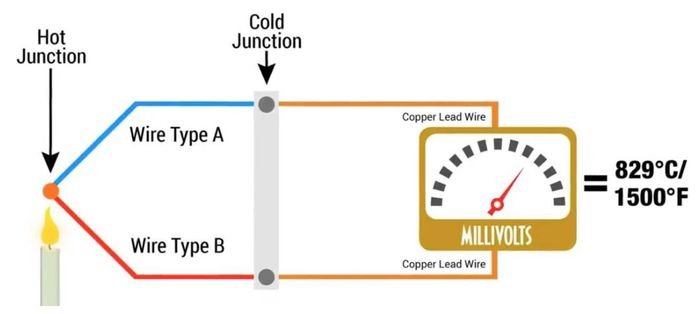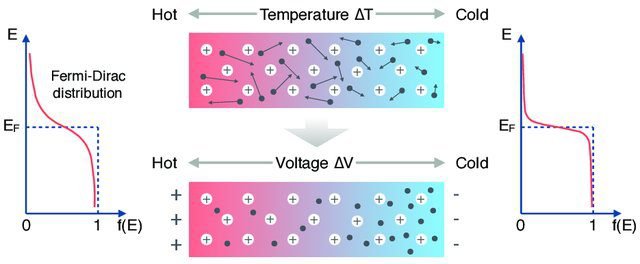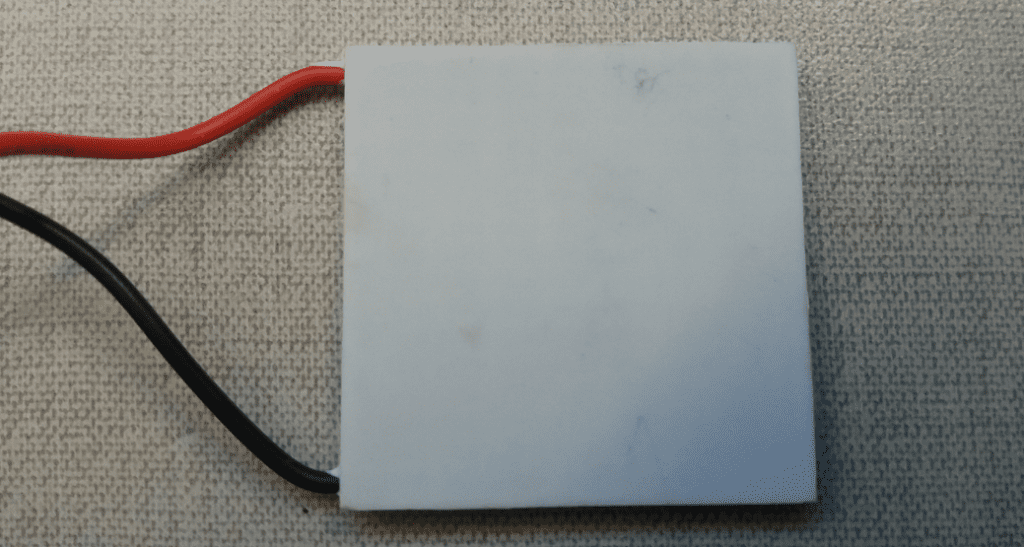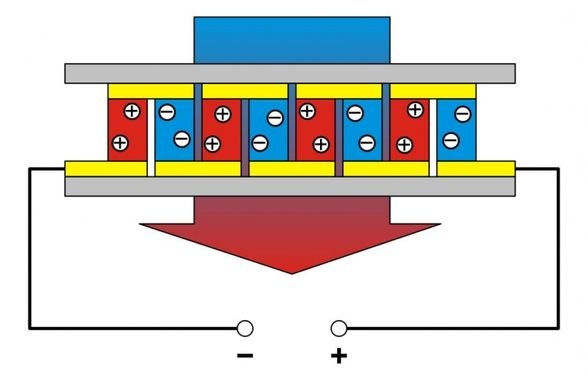The Seebeck and Peltier effects are thermoelectric phenomena that explain the operation of thermocouples, temperature sensors with 2 different materials.
The Seebeck effect
This phenomenon was discovered in 1821 by the German physicist Thomas Johann Seebeck. Considerate the circuit below with 2 different metals A and B. When heating one of T_{1} or T_{2} junctions, an electromotive force (potential difference) is produced in V terminals.

The thermocouple is a temperature sensor that uses the Seebeck effect. When heating the hot junction, a voltage directly proportional to temperature is produced on terminals linked to the cold junction. However, the generated voltage is too small, around microvolts/ºC. Because of that, it’s used an amplifier electronic circuit, to read the signal more easily and determine temperature.


How temperature difference between junctions produce electrical energy? Every metal has free electrons, they are in the atom’s most external orbit, when receiving energy, they surpass the potential barrier and leave the electrosphere.

These electrons have thermal energy. When higher the temperature, higher the vibration of atoms and free electrons, therefore, higher thermal energy. When there is a difference in temperature, electrons concentrate on the cooler side, due to an increase in electrons’ vibration.

The materials have different electric and thermal conductivity. The same temperature variation will produce different voltage values for each metal. Consequently, a current is created when the circuit is closed.
The Peltier phenomenon
This thermoelectric effect is the opposite of Seebeck, which was discovered accidentally in 1834 by the French physicist Jean-Charles-Athanase Peltier. He discovered that when an electric current flows in a circuit composed of two filaments: one made of copper and another made of bismuth, one junction becomes hotter and another cooler.

How electric current produces temperature differences? Each metal has an average thermal energy of electrons. When electrons in the current go from an alloy to another through a junction, they lose or absorb heat. Which junction will warm up or cool down depends on the current’s direction. Cold junction absorbs heat, while hot junction emits heat.
Peltier cell

The commercial Peltier cell uses semiconductors because they are better to produce thermoelectric effects. Are used 2 doped semiconductors of n (excess of electrons) and p (lack of electrons) types. The most used materials are bismuth telluride (Bi_{2}Te_{3}) and lead telluride (PbTe).

A Peltier cell has many junctions connectng semiconductors with the conductive mesh.







Peltier cells are very fragile, can be hot on both sides and stop working. Because of that, I haven’t published any practical demonstration of these cells. I will see what I can do.